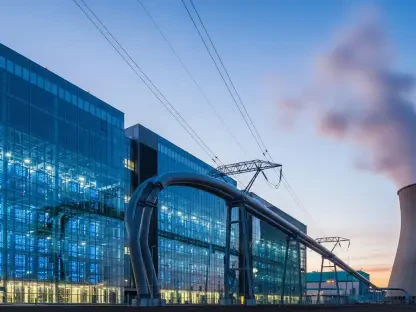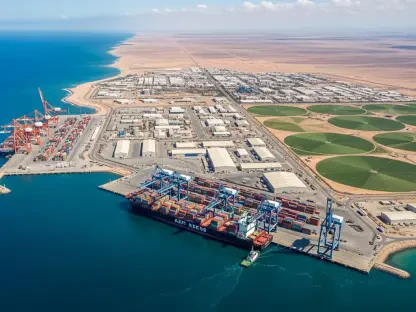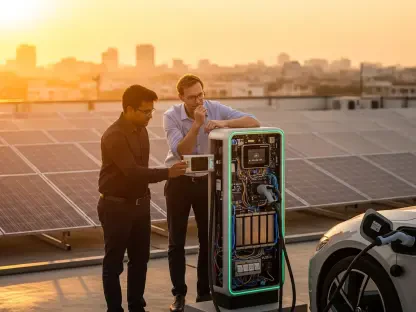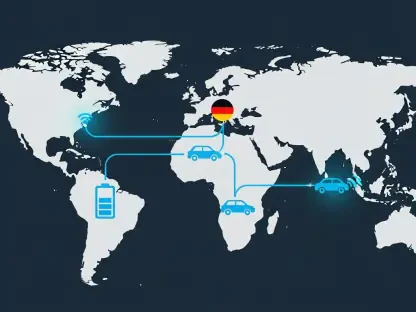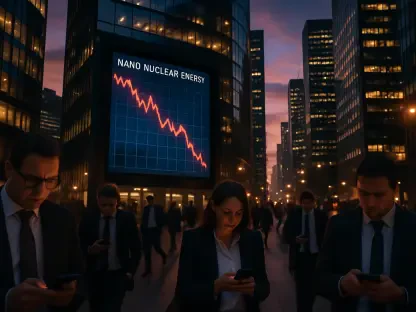Vietnam has recently introduced significant regulatory updates in the energy, mineral, and construction sectors. These changes include an amended National Power Development Plan (PDP8), new rooftop solar energy tariffs, updated regulations on construction activities, and a newly passed Law on Geology and Minerals. This article will delve into the details of these updates and their implications for various stakeholders.
Amended National Power Development Plan (PDP8)
Implementation Plan Approval and Amendments
On April 1, 2024, the Prime Minister approved the Implementation Plan for PDP8, covering the period from 2021 to 2030 with a vision towards 2050. This approval marked a significant milestone for Vietnam as it seeks to address the increasing demand for electricity while transitioning to more sustainable energy sources. This plan was further amended on December 28, 2024, to address specific directives and incorporate detailed lists of renewable energy projects previously uncovered in 17 provinces.
The key elements of the updated plan include the introduction of various projects in the renewable energy sector, such as onshore and nearshore wind energy, small hydropower, biomass, and waste-to-energy projects. These updates underscore Vietnam’s commitment to diversifying its energy mix and reducing reliance on fossil fuels. Local authorities are given clear instructions to review and ensure compliance with overlapping master plans during project implementation, emphasizing the need for a holistic and coordinated approach to energy infrastructure development.
Legal and Overlapping Concerns
A significant aspect of the amendment is the emphasis on resolving all legal issues and overlapping concerns before project approval to prevent “legitimizing wrongful actions.” This move is in response to previous challenges faced in implementing large-scale projects, where legal ambiguities and overlapping jurisdictions led to delays and inefficiencies. The updated plan seeks to streamline the approval process and enhance the legal framework governing energy projects.
Additionally, on December 31, 2024, another decision was made to adjust PDP8 for the same period and vision, underscoring the dynamic nature of the plan and the government’s responsiveness to emerging challenges and opportunities. This decision aims to ensure that the implementation of PDP8 remains aligned with Vietnam’s broader development goals, including economic growth, environmental sustainability, and energy security.
New Rooftop Solar Energy Tariffs
Tariff Rates for Rooftop Solar Electricity
Vietnam Electricity (EVN) issued new tariff rates for rooftop solar electricity in 2025. For systems operational from June 1, 2017, to June 30, 2019, the tariff is set at VND 2,275 (equivalent to 9.35 US cents) per kWh, while systems operational from July 1, 2019, to December 31, 2020, will receive VND 2,039 (equivalent to 8.38 US cents) per kWh. This revised tariff structure aims to provide a stable and predictable return on investment for stakeholders involved in the rooftop solar sector, thereby encouraging more widespread adoption of this clean energy technology.
The introduction of these new tariffs reflects the Vietnamese government’s ongoing efforts to promote renewable energy and reduce greenhouse gas emissions. The tariffs are designed to make rooftop solar installations more financially viable for homeowners and businesses, thereby accelerating the transition to a more sustainable energy system.
Promoting Renewable Energy Investments
The tariff structure for rooftop solar energy in 2025 is part of a broader strategy to attract investments in renewable energy resources. By offering competitive rates for electricity generated from rooftop solar systems, the government aims to sustain the growth of this sector and encourage continued investment. This approach aligns with Vietnam’s commitments under international climate agreements and its national policies on energy transition and environmental protection.
In addition to providing financial incentives, the new tariff rates are expected to drive technological innovation and efficiency improvements in the rooftop solar industry. Stakeholders are likely to invest in advanced technologies and best practices to optimize the performance of their solar installations and maximize returns. As a result, the overall quality and reliability of rooftop solar systems in Vietnam are set to improve, contributing to the country’s energy security and sustainability goals.
Updated Regulations on Construction Activities
Introduction of Decree No. 175/2024/ND-CP
Decree No. 175/2024/ND-CP, issued on December 30, 2024, introduces several changes to the management of construction activities, replacing Decree No. 15/2021/ND-CP and Decree No. 53/2017/ND-CP. The updated decree aims to streamline the regulatory framework governing construction projects and enhance the efficiency of project approval and implementation processes.
One of the key amendments includes the expansion of project categories that only require the preparation of economic-technical reports instead of more comprehensive feasibility study reports. This change is expected to reduce the administrative burden on project developers and expedite the approval process for certain types of projects. These expanded categories include projects for religious purposes, new construction, renovation, or upgrading with investment below VND 20 billion (excluding certain costs), Group C projects for maintenance or repair, dredging and maintaining public maritime channels or inland waterways, and low-cost investment projects that primarily involve equipment purchase, services, and installations.
Specific Project Categories and BIM Mandate
Another significant change introduced by Decree No. 175/2024 is the mandatory application of Building Information Modeling (BIM) for new construction projects of Level II or higher within Group B projects, starting from the project preparation stage. BIM is a digital representation of the physical and functional characteristics of a facility, and its application is expected to enhance the efficiency and accuracy of project planning, design, and execution.
The decree provides specific regulations for energy infrastructure projects, recognizing the unique challenges and requirements associated with this sector. In addition to general construction regulations, these projects must comply with detailed requirements for legitimate land documents needed for construction permits, ensuring that all legal and administrative aspects are addressed before project commencement. This approach aims to mitigate risks and enhance the overall success rate of energy infrastructure projects in Vietnam.
New Law on Geology and Minerals
Introduction of Law No. 54/2024/Q#5
The Vietnamese National Assembly passed Law No. 54/2024/Q#5 on geology and minerals on November 29, 2024, which will take effect on July 1, 2025, replacing the old Law No. 60/2010/Q#2 on minerals. This new law represents a comprehensive overhaul of the legal framework governing geology and mineral exploration, reflecting the evolving needs and priorities of Vietnam’s mineral sector.
The new law introduces comprehensive state policies for geology and mineral exploration, including the development and implementation of strategies, master plans, and planning for the sustainable management and efficient use of geological and mineral resources. These policies are designed to ensure that Vietnam’s mineral resources are utilized in a manner that supports long-term economic development while minimizing environmental impacts.
Investment and Management of Mineral Resources
One of the key provisions of the new law is state investment in exploring strategic minerals and high-value minerals. This provision aims to enhance the strategic reserves of critical minerals and support the development of industries that rely on these resources. The law also addresses decisions regarding mineral extraction rights and intergovernmental treaties, providing a clear and transparent framework for the management of Vietnam’s mineral resources.
Additionally, the law includes policies for mineral reservation, import, export, and ensuring a stable raw material supply for domestic production. This holistic approach aims to balance the needs of the domestic economy with the demands of international markets, ensuring that Vietnam can effectively manage its mineral resources in a dynamic and competitive global environment.
Classification and Licensing
The new law classifies minerals into four groups for better management: metallic minerals, construction materials, common construction materials, and materials for foundational construction and disaster prevention. This classification system is designed to streamline the regulatory framework and provide clear guidelines for the exploration, extraction, and use of different types of minerals.
Under this new law, the Ministry of Natural Resources and Environment (MoNRE) and provincial People’s Committees are assigned specific authorities for licensing mineral exploration and extraction. This decentralized approach aims to enhance the efficiency and responsiveness of the licensing process, ensuring that decisions are made at the appropriate level of government and in a timely manner.
Guidance on Mineral Recovery
Vietnam has rolled out major regulatory updates affecting its energy, mineral, and construction sectors. Key among these changes is the amended National Power Development Plan, known as PDP8. This revised plan outlines the country’s strategy for developing its power sector over the coming years. In addition to the changes in the power development plan, new tariffs have been introduced for rooftop solar energy, a move likely aimed at promoting the use of renewable energy sources.
Furthermore, the regulatory landscape for construction activities has been updated. These updates aim to streamline processes and possibly enhance safety and efficiency in construction projects. Finally, Vietnam has passed a new Law on Geology and Minerals. This legislation will impact how geological and mineral resources are managed and utilized, setting forth new guidelines and standards.
These regulatory updates are poised to have significant implications for various stakeholders, including businesses, investors, and local communities. The changes in the power sector and the new tariffs for rooftop solar energy could spur investment in renewable energy projects, while the updated regulations in construction are likely to affect contractors and developers. The new Law on Geology and Minerals will influence mining operations and could impact environmental policies as well.
Overall, these updates reflect Vietnam’s ongoing efforts to modernize its regulations and promote sustainable development across key industries.



